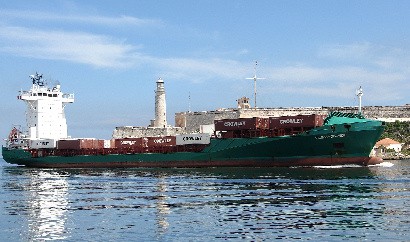4 Essential Facts About the Russian Oil Price Cap

The new price cap, at $60 per barrel, on some kinds of Russian oil will have multiple effects on the world financial and commodities markets. But aside from being nearly impossible to enforce, along with additional logistical problems, it is possible that the cap might end up being a dud. Everything depends on whether the G7 member nations adhere to the price maximum and what the global petroleum markets do in the meantime.
The hoped-for impact is to minimize Russia’s profits on crude oil but simultaneously keep the liquid gold flowing to nations who need it badly. The entire idea of the cap is an iffy proposition and was the brainchild primarily of the US and European nations who want to punish the Russian government for its incursion into Ukraine in February 2022. Whether you trade foreign currency, stocks, options, commodities, CFDs (contracts for difference), or index funds, when you are investing in the stock market, it’s imperative to stay informed about the latest developments regarding Russia’s petroleum export situation, the Russia-Ukraine war, and world energy markets. Here are several of the most relevant facts that can help inform your buying and selling decisions.
Forex (FX) Traders Must Follow Daily Developments
The international oil sector is one of the fastest-moving markets in the world. That’s just one reason that foreign currency traders who regularly buy and sell dollars, yen, yuan, euros, and other major forex components must keep an eye on the daily changes in events. Assuming you’ve already made the wise decision to do all your forex trading with a reliable broker, remember to review daily news stories and financial reports on the following areas:
- The difference between the price of Brent crude and Russian oil
- Decisions out of the G7 nations about changes to the level of the price limit, which currently stands at $60-per-barrel
- Any movement toward a peace treaty in the Ukraine-Russia war
- Attempts by China, India, or various European nations to make side deals in order to avoid paying the stated ceiling price
- Changes in the price-per-barrel of all forms of petroleum
- Increased or decreased volatility in the international oil markets
It Will Be Hard to Enforce
There’s a common problem in international law regarding enforcement. This is particularly true in the case of Russia’s wartime economy and the per-barrel price ceiling set by the G7 nations. Regardless of the ethical justification for the rule, which is nothing more than punitive political action against Russia’s government, it will be tough to enforce. Why? Because the two nations at the heart of the cap’s goals, China and India, have plenty of ways to side-step the $60 limit. The sellers, Russia’s oil companies, still stand to earn a significant profit even at the imposed value.
Additionally, both China’s and India’s government negotiators can use the tacit legality of the $60 ceiling as a bargaining chip when they negotiate contracts with their Russian counterparts. With the lax enforcement and tracking provisions in G7’s regulation, any buyer can employ simple tactics for paying Ural-based suppliers an amount higher than the ceiling price. The additional problem is that China has been engaged in blatant cheating on international agreements, both financial and political, since the nation’s founding by Communist rebels in 1949
The $60-Per-Barrel Ceiling Has Contradictory Goals
The goals of the dollar limit are twofold, and both are poorly designed. The first is to deal a financial blow to Russian per-barrel profits. The second is to keep the pipelines open just enough to provide enough supply to primary buyers. It’s a bipolar strategy that aims at hitting a hypothetical sweet spot, which is a nearly impossible feat. Already, the first days of the rule have shown any success at achieving either goal. At $60-per-barrel, Russia’s sellers still earn a substantial profit. With such weak enforcement and oversight provisions, the G7 regulation is typical of a rule written by a committee.
Commodities Volatility Impacts Stability of US Dollar
The basic fact behind all the rulemaking and price capping is that commodities prices, especially in the energy sector, are notoriously volatile. In the last few months, they have been seesawing with typical volatility and unpredictability. That kind of scenario tends to send US dollar strength on a similar roller coaster. For forex traders, that can spell opportunity if they know how to hedge USD weakness and uncertainty by purchasing yen, euros, pounds, yuan, and other, more stable currencies. The concurrent risk is that those hedge targets could drop in value faster than the dollar, leaving traders with a potential loss.

